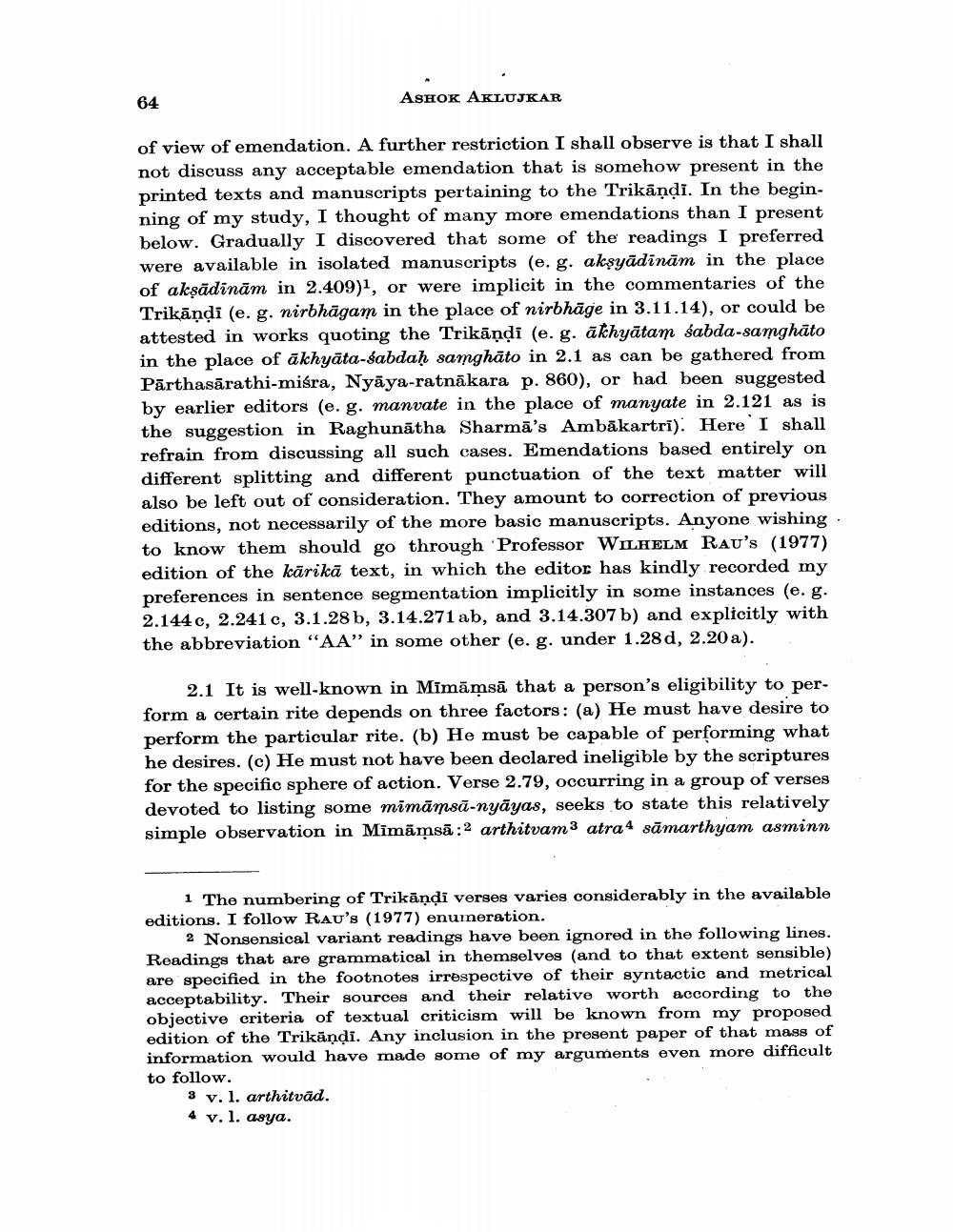Book Title: Emendation Of Some Verses In Bhrtharis Trikandi Author(s): Ashok Aklujkar Publisher: Ashok Aklujkar View full book textPage 2
________________ 64 ASHOK AKLUJKAR of view of emendation. A further restriction I shall observe is that I shall not discuss any acceptable emendation that is somehow present in the printed texts and manuscripts pertaining to the Trikāņdi. In the beginning of my study, I thought of many more emendations than I present below. Gradually I discovered that some of the readings I preferred were available in isolated manuscripts (e. g. akşyādinām in the place of akşādinām in 2.409), or were implicit in the commentaries of the Trikāņdi (e. g. nirbhāgam in the place of nirbhāge in 3.11.14), or could be attested in works quoting the Trikāņdi (e. g. ākhyātam sabda-samghāto in the place of ākhyāta-sabdaḥ samghāto in 2.1 as can be gathered from Pārthasārathi-miśra, Nyāya-ratnākara p. 860), or had been suggested by earlier editors (e. g. manvate in the place of manyate in 2.121 as is the suggestion in Raghunātha Sharma's Ambākartri). Here I shall refrain from discussing all such cases. Emendations based entirely on different splitting and different punctuation of the text matter will also be left out of consideration. They amount to correction of previous editions, not necessarily of the more basic manuscripts. Anyone wishing to know them should go through Professor WILHELM RAU's (1977) edition of the kārikā text, in which the editor has kindly recorded my preferences in sentence segmentation implicitly in some instances (e. g. 2.144c, 2.241 c, 3.1.28b, 3.14.271 ab, and 3.14.307 b) and explicitly with the abbreviation “AA” in some other (e. g. under 1.28d, 2.20 a). 2.1 It is well-known in Mimāņsā that a person's eligibility to perform a certain rite depends on three factors: (a) He must have desire to perform the particular rite. (b) He must be capable of performing what he desires. (c) He must not have been declared ineligible by the scriptures for the specific sphere of action. Verse 2.79, occurring in a group of verses devoted to listing some mimāmsā-nyāyas, seeks to state this relatively simple observation in Mimāmsā: 2 arthitvam 3 atra4 sāmarthyam asminn 1 The numbering of Trikāņdi verses varies considerably in the available editions. I follow RAU's (1977) enumeration. 2 Nonsensical variant readings have been ignored in the following lines. Readings that are grammatical in themselves (and to that extent sensible) are specified in the footnotes irrespective of their syntactic and metrical acceptability. Their sources and their relative worth according to the objective criteria of textual criticism will be known from my proposed edition of the Trikāņdi. Any inclusion in the present paper of that mass of information would have made some of my arguments even more difficult to follow. 3 v. 1. arthitvād. 4 v. l. asya.Page Navigation
1 2 3 4 5 6 7 8 9 10 11 12
